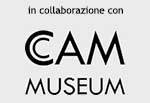
Deframing or not?
Although we have been living in the digital age for decades, this has not yet developed — and perhaps never will — its own original representation; the entire symbolic system, through which we interface with digital devices, refers to the analog, pre-digital world. The now familiar system of icons is in fact almost entirely made up of pictograms that describe functions, through the graphic representation of the same (or similar functions) as they exist in physical, non-digital reality.
Just think, for example, of some of the most common: typically, we represent e-mail with a letter envelope, the coloring function with the stylization of a paint can, the space in which we collect files with the design of a document folder , the shopping function with a supermarket trolley …
At the basis of all this, surely, there is not only the need to make the human/digital device interfacing functions familiar, therefore intuitive, but also the objective difficulty of visually (and also recognizably) representing an immaterial universe.
At the same time, there is another question, of a more purely cultural type. Always, when there is a radical change in society, whatever its origin, and therefore its nature, there is an initial phase in which this change is still expressed using the pre-existing language; before the change produced in society, or at least before it fully asserts itself, its weltanschauung is communicated through the words and concepts that existed before its appearance, and only later does it build its own language — words and new concepts, which are organically consistent with it.
With the digital revolution this has happened only partially, and precisely where it is most macroscopically visible — in the world of interfaces, in fact — everything or almost still refers to the analog world.
The question, in fact, is eminently cultural, and testifies how man has inserted digitization (although it may be, even today, omnipresent and omnipervasive) within a cultural framework that was established long before the era of bit.
This is not intended to prefigure any judgment of merit, but only to describe a condition, in order to understand its implications. That frame, in fact, if on the one hand it allows us to better metabolize such wide and profound changes, on the other it is as if it conceptually delimits them, but everything that remains outside this conceptual frame ends up eluding us.
A fairly interesting example of all this comes from one of the best known metaphors used in the computer world, so much so that even the most popular operating system in the world has adopted it as its name: windows.
Not a few will be surprised to discover that the origin of this metaphor is actually almost six hundred years old; in fact, it dates back to the theorizations of Leon Battista Alberti, who in his ‘De pintura’ (1435) writes: \"Dove io debbo dipingere scrivo uno quadrangolo di retti angoli quanto grande io voglio, el quale reputo essere una finestra aperta per donde io miri quello che quivi sarà dipinto\" (\"Where I have to paint I write a quadrangle of right angles as large as I want, and which I consider to be an open window from which I look at what there it will be painted\"). This concept, a window through which I observe, then impregnated painting with itself for centuries; and after it, photography, cinema, television …
In a certain sense, these two concepts (the frame and the window) have profoundly conditioned the visual arts, not only from the point of view of the artists, but also — if not above all — from that of the users.
In any case, and here we begin to approach what is the core of this writing, this conditioning has acted both in accepting and denying it; in fact, there are countless attempts to overcome the implicit limits of the two concepts, from trompe-l’oeil to 360° photography.
At the origin of the concept of frame, there is obviously a physical question, namely the size of the surface on which what you want must be represented; a dimension that almost never corresponds to the width of vision of the author/observer, even if he or she had a fixed gaze. The frame is therefore the physical limit, the margin of representation. But since we know that, in fact, there is more beyond that limit, here is the window, the portion of visible reality.
The history of art, however, tells us that there have been countless attempts to overcome these limits, to cross the threshold, even passing from a perspective to an immersive vision. Here it is worth mentioning the Sala dei Giganti, one of the most famous frescoed rooms inside the Palazzo Te, built in Mantua by Giulio Romano, between 1531 and 1536. At the time of its construction, the floor of the room was made of from pebbles, which were then painted in the margins between this and the walls, thus constituting a perfect example of an immersive environment, six centuries before virtual reality.
This urge to break the frame, to expand the vision, has been pursued a lot in painting, and then, with the emergence of new forms of visual representation thanks to technological innovation, also by cinema and photography.
The cinema, in particular, thanks to its most peculiar characteristic — the temporal dynamics — first operated in this sense through a surreptitious break: without prejudice to the physical fixity of the screen (window), thanks to the multiplication of frames (once again, the concept returns in terminology …) and to camera movement, made it possible to see beyond the limits of this. The camera lens replaces the observer’s eye and, inside the frame, returns a panoramic view, wider than the static one from the window.
Subsequently, technological innovations have then made possible much wider screens (cinerama), even enveloping, up to multi-camera systems, which record simultaneously in every possible direction, and which then — through special software — make it possible to dynamically join these different shots, and therefore offering a vision capable of freely returning any point of view, in any direction.
Cinema, and therefore the whole moving image in general, has within itself the possibility of an apparent rupture of the frame. But, in fact, it is only apparently such, since it acts through the identification of the camera’s point of view with that of the viewer. Furthermore, cinema is an offshoot of theater, it tells stories. In a certain sense, therefore, the screen is like the fourth wall (1) of the eighteenth-century european theater: and the more realistic what appears there, the more it becomes an insurmountable threshold. While in theatrical representation there has always been the possibility of crossing it, in one direction and another, physically, in cinema this possibility can only be simulated. For example, in Woody Allen’s Whatever Works, the protagonist (who is also the narrator) addresses the audience directly, at the beginning and at the end of the film; but it is, in fact, a mise en scène, while the screen remains an insuperable diaphragm.
However, developments in digital technology have technically opened up new possibilities.
Both virtual reality (VR) and augmented reality (AR), in fact, allow immersion and interactivity at the same time. And even if it is true that, to date, the equipment necessary to perform them is still not very practical, and that — especially as regards VR — it presents problems of psycho-physical sustainability (beyond a certain time threshold), it is interesting to ask why they are so scarcely explored by artists.
Why does a video artist not feel the desire to break the frame, to expand their work to envelop the observer?
Technically, at least three roads would be viable. The creation of a defined virtual environment, freely usable by the observer, within which things can also happen, fixed and predetermined; the creation of a generative virtual environment, which expands according to the subjective movement of the user, and where — once again — things can happen, placed spatially and temporally in a predetermined or random way; the superimposition, on a real environment, of virtual elements, in turn visible on the basis of a storyboard or randomized.
Net of any technical difficulties, however relative, and in any case certainly surmountable for many artists, there is obviously a cultural problem, which keeps them trapped in the frame — or, if you prefer, far from virtualization.
Against all appearances, they are perhaps more children of Leon Battista Alberti than of the binary code, they have a cultural debt more with painting (and its millennia of history) than with 3D modeling, even if they may never have held a brush. Personally, I think this is positive, because in that history there is a cultural density that constitutes an extraordinary wealth, and enormous potential. But, at the same time, I believe that the conjunction of art and technology can offer much more than the virtual exploration of a Van Gogh or Monet painting. The time is ripe to imagine an art that expands, that leaps over the window and takes us with it and within itself. It is time for new Giulio Romano. And we are waiting to see them at work.
1 - During the 1700s, in Europe was established the idea that, to make the acting more truthful, the actors had to be separated from the audience, so that they could not see it. It was therefore customary to separate the stage from the audience, using a veil of white gauze (called the fourth wall), which was transparent to the spectators but not to the actors, by virtue of the oxen in the hall and the stage lights.[
Enrico Tomaselli / 2022-02-01]
<< back




